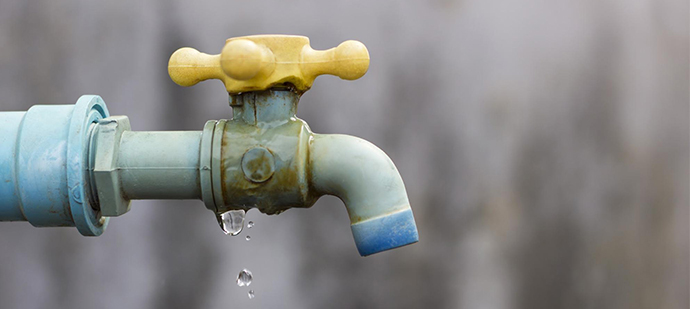Overview To Water Leak Detection At Home
Overview To Water Leak Detection At Home
Blog Article
Presented here down the page you'll find a good deal of decent content when it comes to Finding hidden leaks.

Early detection of leaking water lines can minimize a possible disaster. Some little water leaks might not be visible.
1. Analyze the Water Meter
Every home has a water meter. Examining it is a guaranteed manner in which assists you find leaks. For starters, switch off all the water sources. Guarantee no one will purge, utilize the tap, shower, run the washing maker or dish washer. From there, go to the meter and also watch if it will certainly alter. Considering that no person is utilizing it, there ought to be no motions. That shows a fast-moving leakage if it moves. If you identify no modifications, wait a hr or 2 and inspect back once again. This indicates you may have a slow-moving leakage that might also be below ground.
2. Check Water Consumption
If you spot sudden modifications, regardless of your usage being the exact same, it suggests that you have leaks in your plumbing system. A sudden spike in your expense suggests a fast-moving leak.
A consistent rise every month, even with the very same behaviors, shows you have a slow leakage that's additionally gradually rising. Call a plumber to extensively inspect your property, specifically if you feel a warm location on your flooring with piping underneath.
3. Do a Food Coloring Examination
When it comes to water intake, 30% comes from toilets. If the color in some way infiltrates your bowl throughout that time without flushing, there's a leak in between the storage tank and dish.
4. Asses Exterior Lines
Do not neglect to check your outside water lines also. Ought to water leak out of the link, you have a loose rubber gasket. One tiny leakage can throw away lots of water and also increase your water expense.
5. Analyze the situation as well as check
Homeowners should make it a practice to inspect under the sink counters as well as even inside cupboards for any type of bad odor or mold growth. These two warnings show a leakage so punctual focus is called for. Doing regular examinations, also bi-annually, can conserve you from a significant trouble.
Inspect for discolorations and deteriorating as many pipelines and also devices have a life span. If you think leaking water lines in your plumbing system, don't wait for it to escalate.
Early discovery of dripping water lines can reduce a potential disaster. Some little water leaks may not be noticeable. Inspecting it is a surefire means that helps you find leakages. One small leak can squander bunches of water and spike your water costs.
If you presume leaking water lines in your plumbing system, do not wait for it to intensify.
How to Know If Your Home Has a Hidden Leak
Water Meter Reveals Inexplicable Water Usage
If you’d like to test whether or not there’s a leak somewhere in your home, you can do this using your water meter. Here is how to conduct the test:
Don’t use any water in your home for at least 30 minutes; this also means not turning on faucets or water-using appliances.
Go outside, and check your water meter for activity.
If your water meter shows that there was activity, even though no one was using any water, this proves that there is a leak in your home.Visible Mold or Mildew Growth
Leaks behind walls create moist, dark environments that allow mold and mildew to grow and thrive. Eventually, you might see mold growth forming on the wall closest to a hidden leak.
If mold is growing in an area that receives a high amount of moisture, such as a bathroom, it may simply be an indication that better ventilation is needed. However, if you see mold growth on a wall or the ceiling in an area where you would not expect, you probably have a hidden leak.
Musty, Mildew Odor
Sometimes you might not be able to see the mold or mildew that is growing as a result of a leak. However, the smell can give the problem away just as easily. If you catch a whiff of something musty, there’s a good chance that old water is collecting somewhere in your home that you can’t see.
Stained/Warped Walls, Ceilings, or Floors
When your home soaks up water, a variety of red flags can become visible, including ceiling stains, bubbling drywall, warped walls, and sagging floors. While these issues can be caused by excess humidity, they can also be signs that a pipe or plumbing connection has started leaking behind your walls.
Inexplicably High Water Bill
After a while, you get a general sense for what your water bill should be. If you own a pool or sprinkler system, your bill will tend to be higher during summer. However, if you receive a water bill that seems especially high, and you can’t figure out what caused it, then you may have a hidden leak somewhere that’s increasing your bill.
https://www.plumbingjoint.com/blog/2019/july/how-to-know-if-your-home-has-a-hidden-leak/

I found that piece of writing on Detecting hidden plumbing leaks when doing a lookup on the web. Do you know about somebody who is curious about the topic? Take a moment to share it. Thanks for your time spent reading it.
Report this page